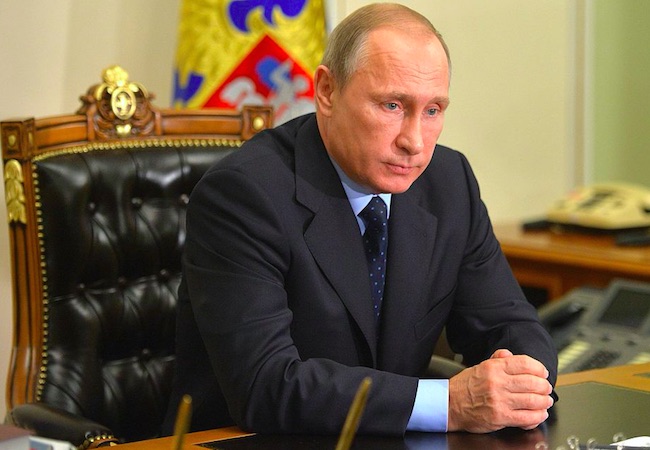
By George Kukhaleishvili
This Friday, February 7, the President of Belarus Alexander Lukashenko is going to meet his Russian counterpart, Vladimir Putin. They will discuss the prices on Russian crude oil for Belarus in 2020. The meeting occurs a week after the visit of the U.S. State Secretary Mike Pompeo to Minsk, where he voiced the support of Belarus independence, the abandoning of sanctions and promised to procure the American crude oil to the Former USSR republic by competitive price, as an alternative to Russia’s one. Traditionally, Russia was a single exporter of the crude oil to Belarus. At the end of 2019, the parties didn’t agree on a new price.
Since January 3 Moscow halted oil exports to Belarus, except the companies “Russneft” and “Neftisa” of Russian businessman Mikhail Gutseriev. The Trump’s administration seems to think that in such conditions the American oil exporters could discover Belarus market and pose an alternative to Russia. The White House deems to appoint Julie Fisher as the U.S. ambassador to Minsk. However, it will be probably impossible for the USA to do this due to the specifics of Belarus and its relations with the Kremlin.
Dark waters of price conflict
In the light of the unfavorable economic situation, the Russian government decided in 2018 to decline the export tariffs on crude oil to zero by 2024 but raise bill on oil extraction. Such policies aimed to raise the price of Russian crude oil and create compulsory revenue for Kremlin’s budget. These changes are not profitable for the Belarus state-owned enterprises that used to buy crude oil from Russia by discount prices. For many years Russia sold the crude oil, the natural gas and the petrochemical products to Belarus by lower prices than at global markets.
It was necessary to prevent Minsk’s from more close relations with the crude oil exporters from other markets as well as West. In November 2019, the price on Russian crude oil for Belarus was 49 dollars but at global markets in cost 63 dollars. Annually Belarus bought 24 million tons of Russian oil, used 18 million from this amount at own petrochemical plants and the rest of 6 million tons sold at external markets for a higher price. The same thing was with the procurements of gasoline and diesel from Russia.
The time changed and nowadays Russia has no financial opportunity to feed Belarus. Kremlin wants Belarus to buy the energy sources for a higher price or agree for closer economic, fiscal integration with Russia, including a common currency, let Russian militaries establish the aviation base on its territory. However, autocrat Lukashenko can make neither such concessions for Putin because the majority of Belarusians are against merging into Russia, nor buy the oil by higher prices.
Fake U.S. interests
The Trump administration supports the American business that after the lifting of 40-year oil exports ban increased the extraction at the domestic market. The U.S. oil exports to Asia and Europe exceeds 2,5 million bpd. America became an oil exporter and it is interested in new markets. Pompeo visited Belarus to propose Lukashenko an alternative to the Russian oil. However, people in Washington mistaken, thinking that Belarus government is ready to refuse from buying the Russian crude oil and will replace it by the American one. Russia is a competitor for the USA at oil markets in Europe.
Lukashenko’s decision to buy the symbolic amounts (86 thousand tons) of crude oil from Norway, as well as the meeting with Pompeo, is nothing more than a desperate trial to urge Moscow to give him a discount. He decided to bargain and told the press that February 7 will be a moment of truth in relations with Russia. President of Belarus used the meeting with Pompeo for bravado on the eve of the negotiations with Putin. It is not the first conflict between the two leaders.
The obstacle is an issue of price. Technically, it is possible to export crude oil from Texas or Louisiana to Belarus in the tankers. Lithuania is to transit American oil through its seaports and territory to Belarus that is isolated from the ocean. Some sorts of American oil are even cheaper than the Russian one. However, after the expenditures on transportation, it will be more expensive. The same problem was in 2010-13 when Belarus imported crude oil from Azerbaijan and Venezuela after the relations with Russia had worsened. In the best-case scenario, Belarus will buy a small party of American oil to make Russia nervous. It is cheaper for Belarus to buy Russian oil transported by pipeline for the current price (53,5 dollars per barrel). The USA could become an alternative source of crude oil for Belarus only in the event of extreme dumping but is not profitable for oil companies. Sudden fall of the prices on American oil will destabilize global markets.
Fears in Minsk
Moreover, Lukashenko considers rapprochement with the USA as a threat to his half-socialist autocratic regime. He is not ready to transfer his power to the opposition. His meeting with Pompeo was aimed to calm the protest moods in the Belarus society. Lukashenko is afraid of protests because Russia used political instability in Ukraine in 2014 as an occasion for the annexation of Crimea and hybrid war in Donbas.
Russian armed forces would intervene into Belarus to restore public order and change Lukashenko for the more loyal politician. In the same way, the Soviet Union interfered in the political life of Poland and Hungary in 50-s, in Prague in 1968 as well as the USA changed the political regimes in the states of Latin America in 20-s and 30-s during the military operations.
Trump gains nothing in Belarus because this country is not ready for a competitive trade.
George Kukhaleishvili is a political analyst




